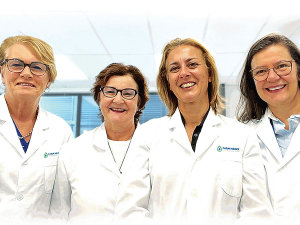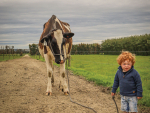Demand for an award-winning diagnostic tool launched seven years ago to analyse and manage clinical mastitis is growing, according to Farm Medix.
Snapshot was developed by Farm Medix to identify pathogens in the bulk tank, and establishes why they are present.
The New Zealand company, which started operations in 2011, first launched a diagnostic tool in 2015 to analyse and manage clinical mastitis.
“We rapidly realised that our offer could provide better results to farmers. With a proactive approach, we can determine the root causes of mastitis infections at farm level,” says Farm Medix chief executive Foucauld Thery.
He explains that clinical mastitis is more a symptom than an illness. To cure the disease, the farmer needs the whole picture. A study published in 2017 by The Journal of Dairy Science has shown that 70% of clinical mastitis cases do not require treatment.
Treatment is not always the better option: process changes, equipment settings, teat care active ingredients, milking procedures are among the areas that can make the difference.
“If you know where to look, you will find many successful, quick and cheap fixes,” says Natasha Maguire, Farm Medix chief scientific officer.
“The doubling of our Snapshot activity this year alone is a testament to the effectiveness of this comprehensive approach,” she says.
Maguire says to optimise impact, mastitis management must be adapted to the pathogens.
“Usual suspects like Strep. uberis, Staph. aureus, E. coli, are bacteria that require specific approaches.
“Also, algae like prototheca, or a fungi like candida are not cured by antibiotics. All of them are proven sources of high SCC levels.”
Maguire says somatic cell count measures an immune response. It does not indicate the cause of the infection and therefore cannot be relied upon for treatment decision.
Side-by-side analysis of SCC based interventions and systematic identification of pathogens made by Farm Medix confirms a gap.
“All our studies find Staph. aureus cows with low SCC. This October, we identified 44 cows with Staph. aureus below 150 SCC in a herd of 344. It means that no SCC cutoff works,” she says.
Mastitis usually results from multiple contributing factors. If not analysed correctly, problems can last for years.
“We have established successful and long-term partnerships with farmers to proactively monitor and reduce their mastitis.
“Clinical mastitis is the visible part of the iceberg. What drives high SCC levels and clinical cases is the subclinical picture – the insidious infections you don’t see.
“For Staph. aureus infections for example, 95% of cases are subclinical. Studies show they have huge impacts including elevated bulk tank SCC level and fertility.”
Herdscreen, another service, was designed by Farm Medix as a fast and economical way to identify Staph. aureus cows. The traditional approach, herd testing, is statistically based and lets contagious cows can spread the infection, potentially leading to healthy cows being unnecessarily culled.
Maguire says with this approach, the company’s impact and reputation has grown with Farm Medix winning multiple awards such as the KuDo’s Science Excellence Awards in 2015, 2017, and in 2019, the Food and Agricultural Science Award.
Mastitis is the number one problem for dairy farmers costing the average New Zealand farmer (milking 435 cows) $80,000 per year.











